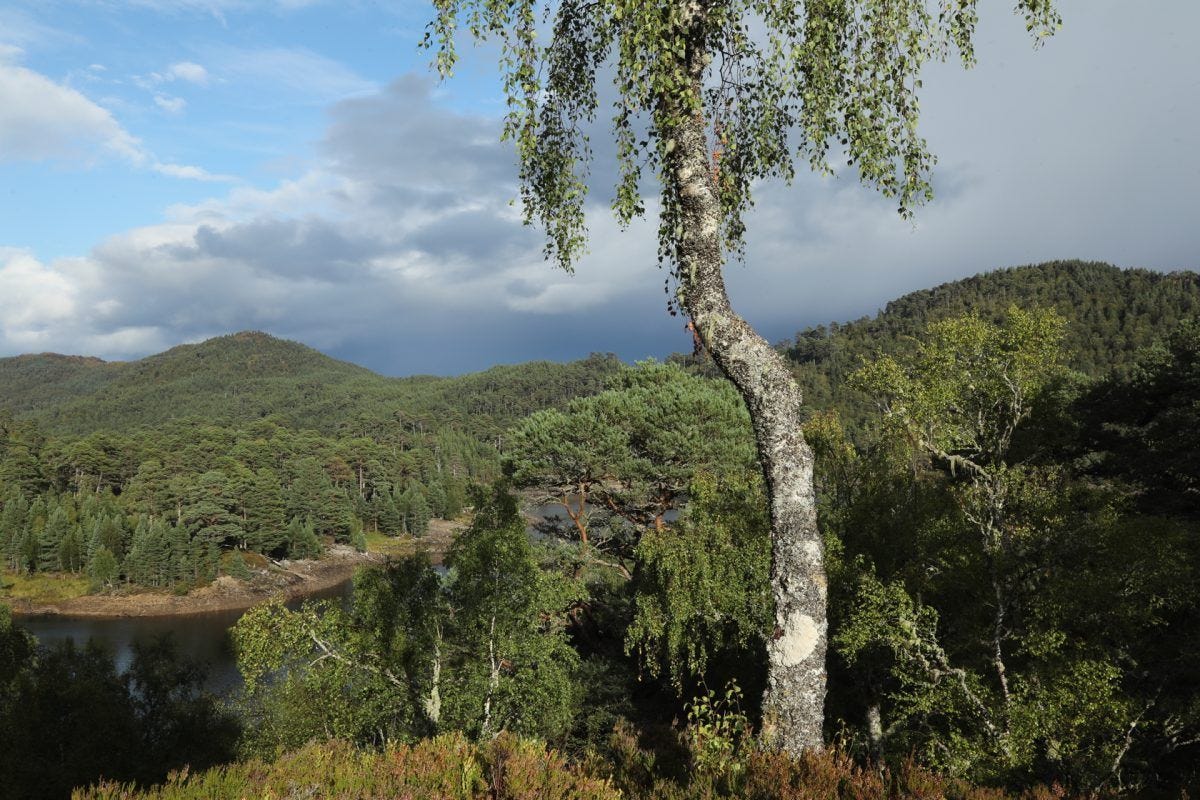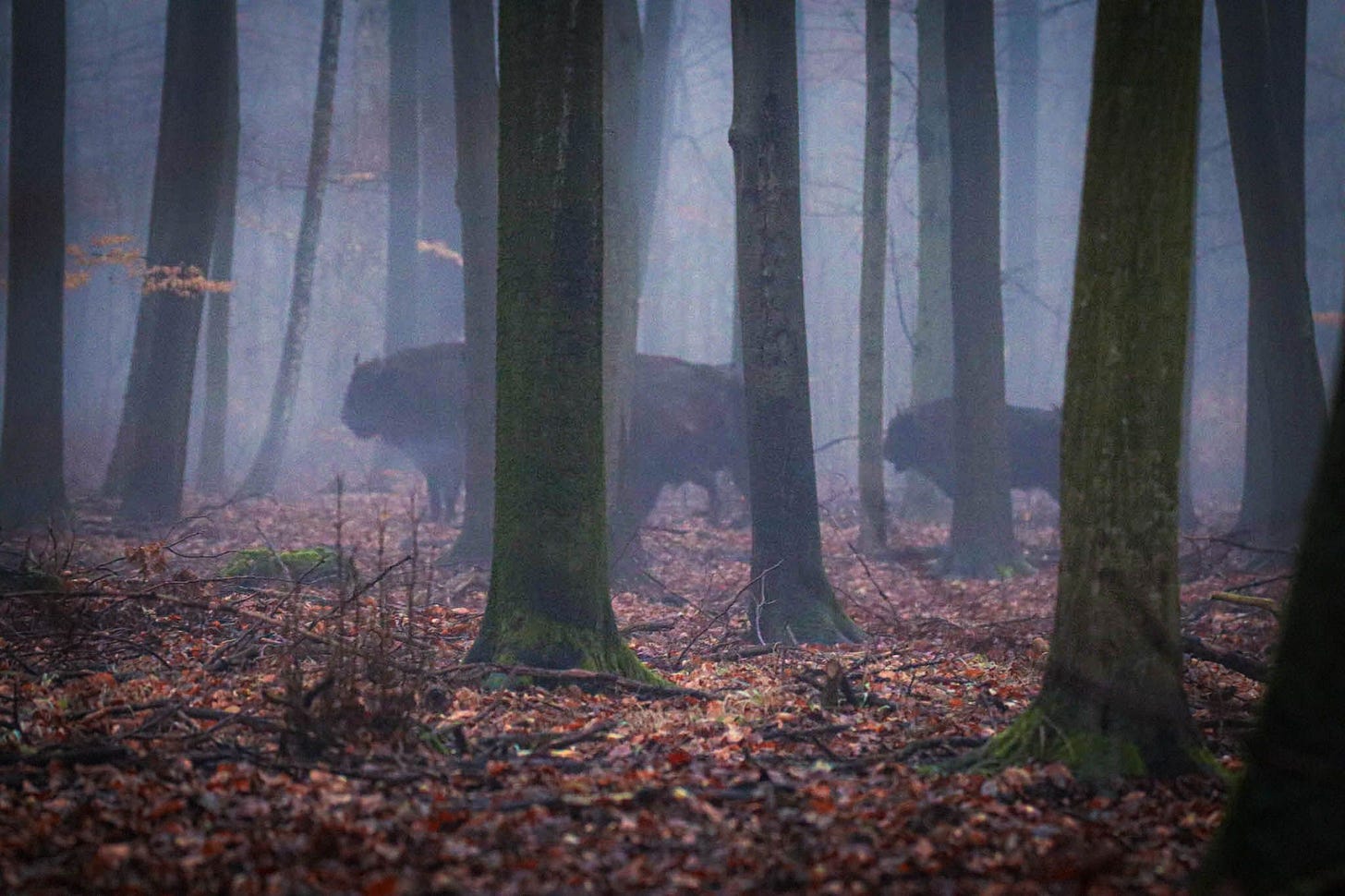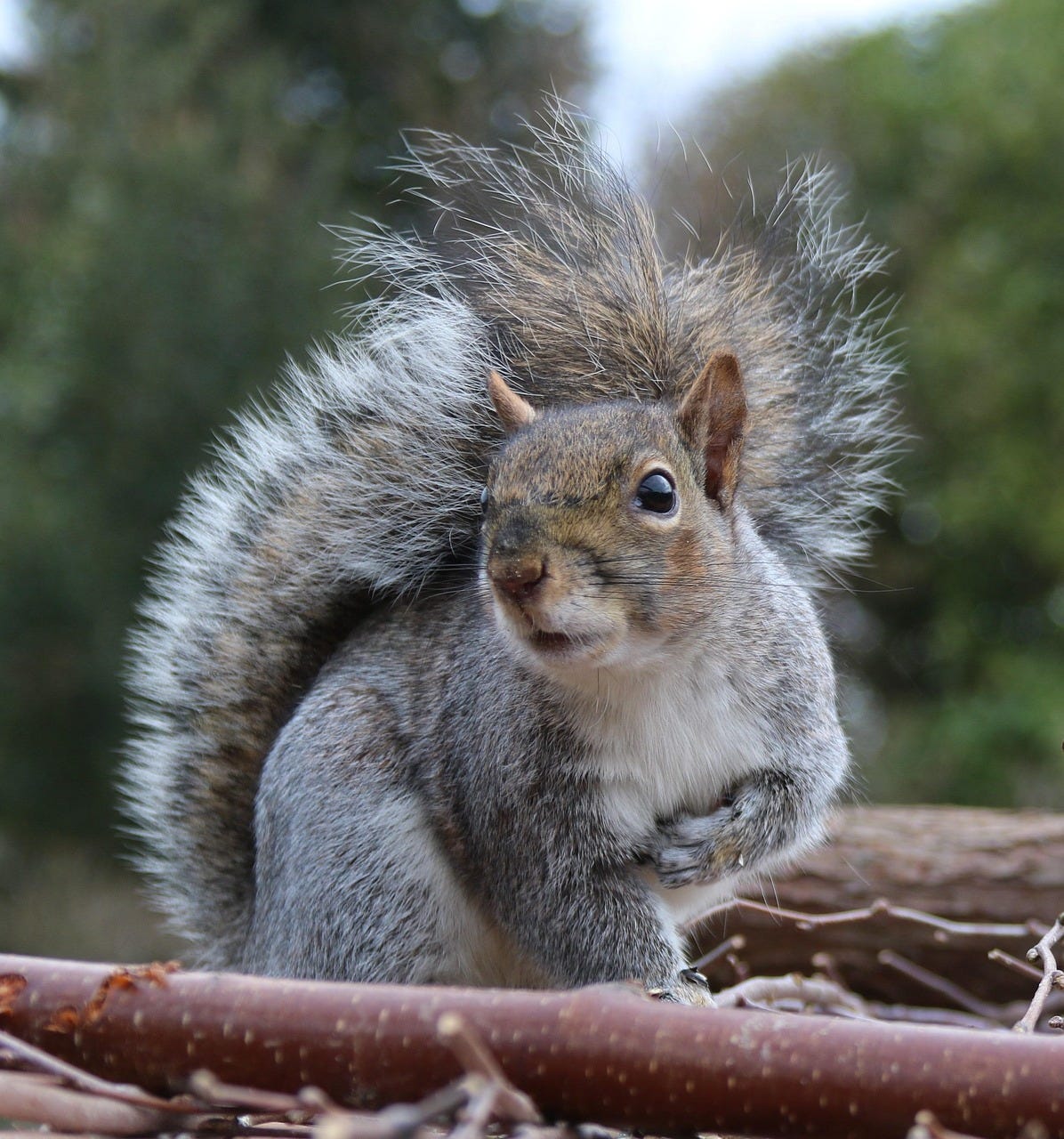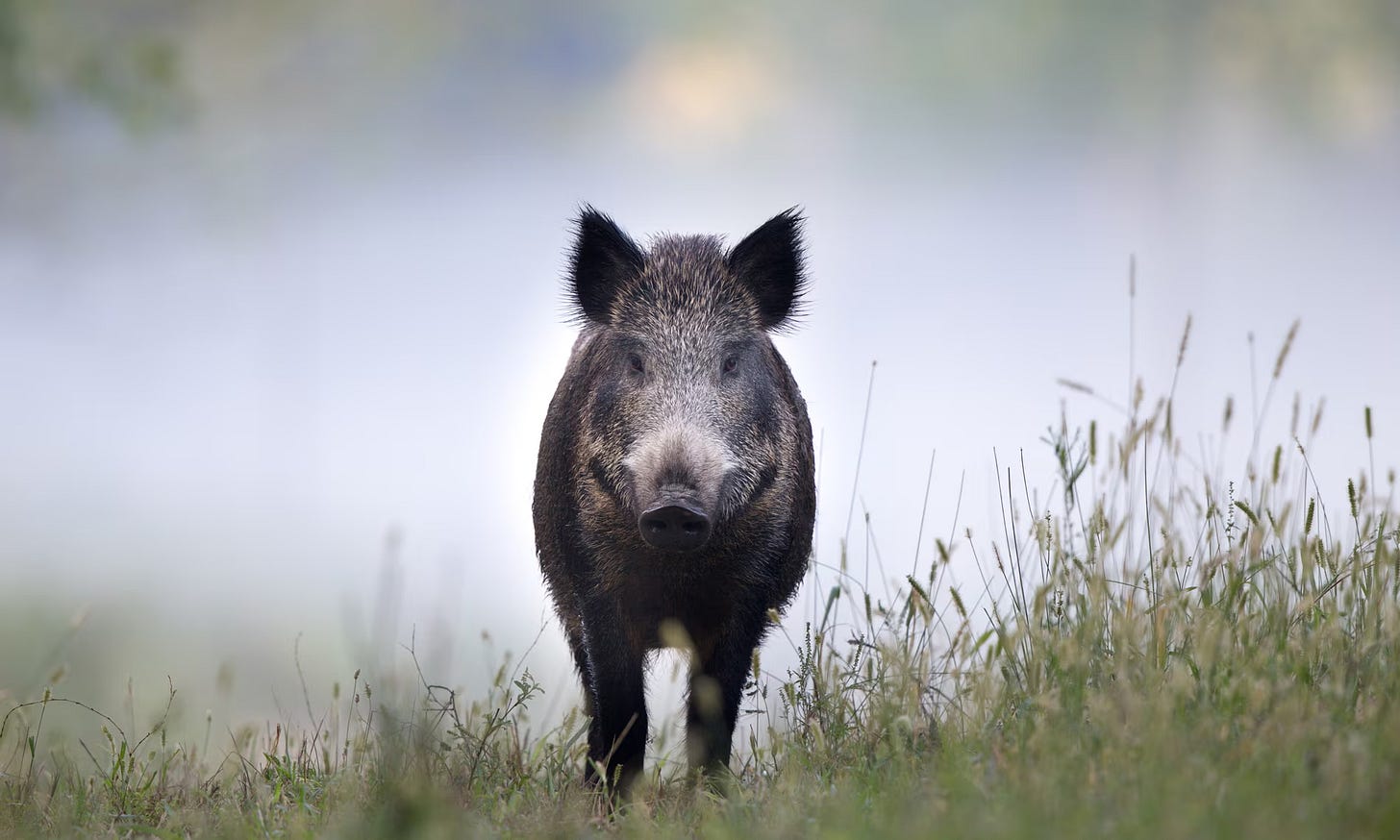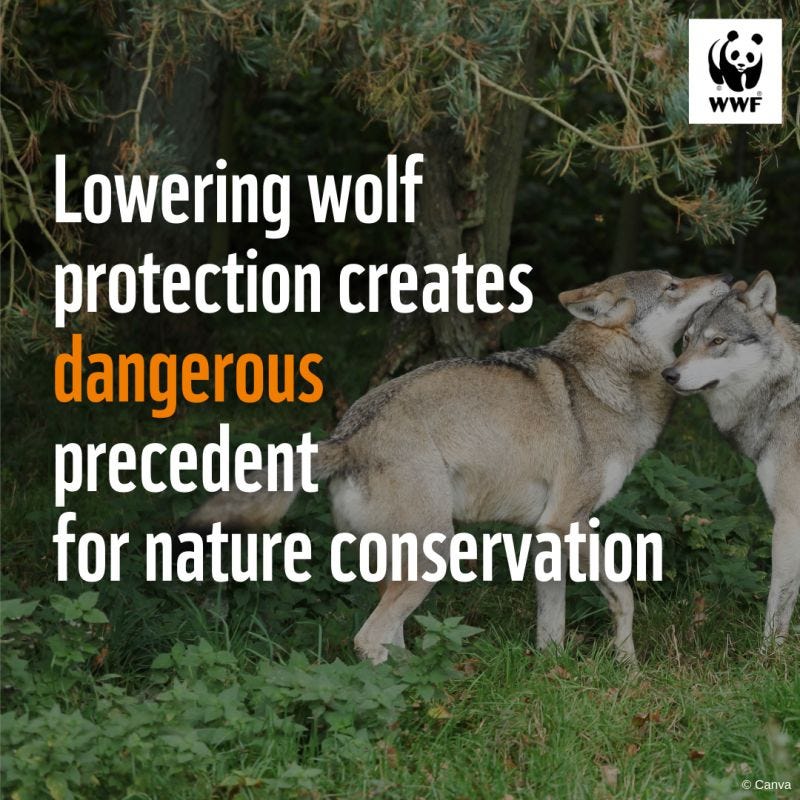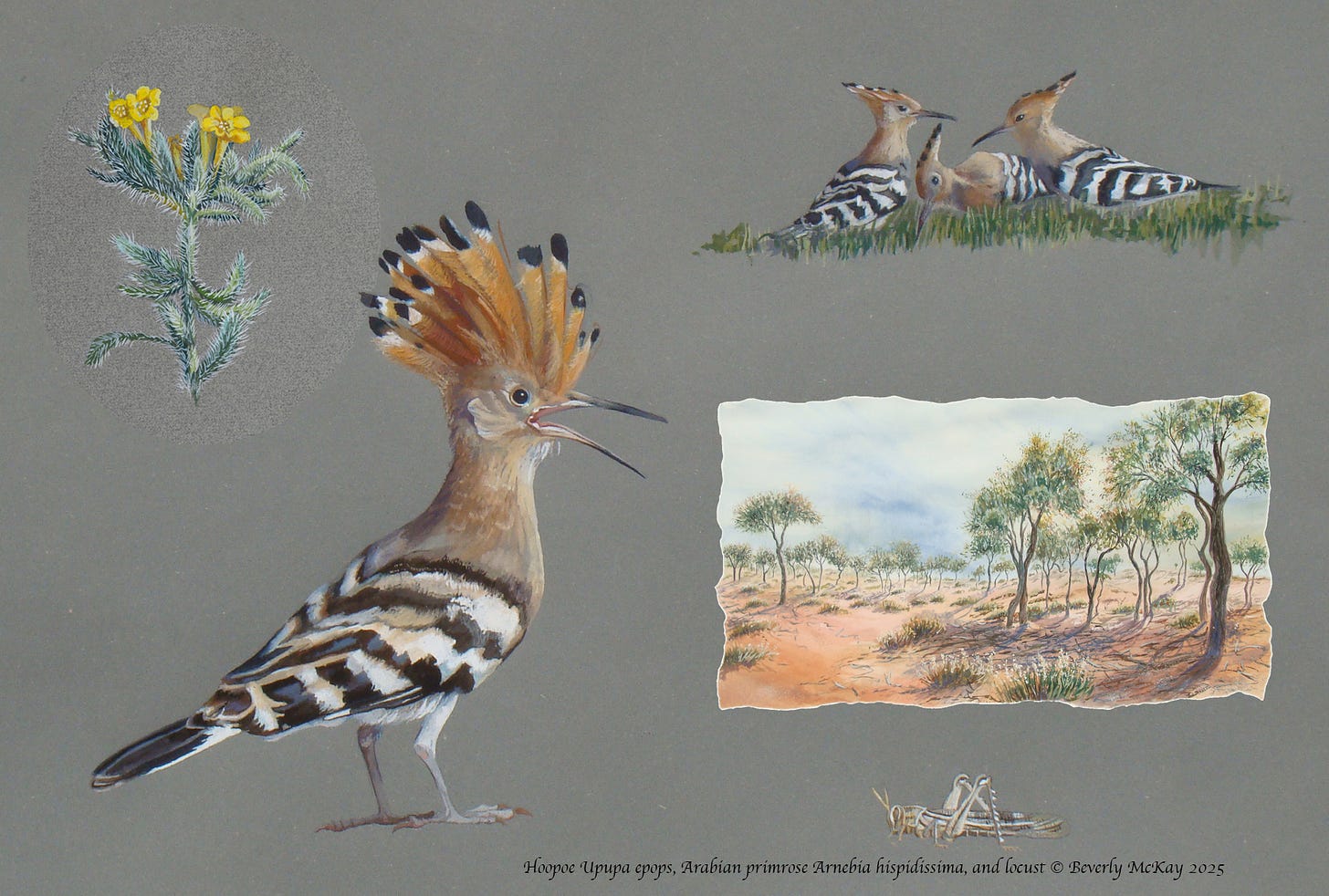Welcome to the latest edition of the Rewilder Weekly! 🦬🌳🐺🌞🌍
World Rewilding Day is coming our way on the 20th of March! Follow this link to get engaged and involved. There are innumerable rewilding organizations around the world by now. The best thing YOU can do on the occasion of World Rewilding Day is to find one of those many organizations near you, give them a call and say, “Hi, how can I help?”
Now then, let’s get on with it - wishing you a good week!
Cheers,
👉 As a reminder: If you come across stories you’d like to see featured in an upcoming edition of the Rewilder Weekly, send them to me and I’ll gladly do what I can.
1) Don’t miss this fantastic rewilding opportunity!
I know, I’m gushing a bit,, but there’s an amazing rewilding workshop coming up - and I’m bummed because I won’t be able to make it. Well, I hope that you can! If you’re in Scotland, or able to get there from 17-24 May, you won’t want to miss this week-long rewilding workshop with rewilding legend and Trees for Life founder Alan Watson Featherstone and Trees for Hope founder Pupak Haghighi.
You’ll be with Alan and Pupak in stunning Glen Affric in the Scottish Highlands, immersed in the world of rewilding, learning how you can take action with your own rewilding project. This unique workshop is made for a group of 10 max - so you better hurry to secure your spot). You’ll be in wild nature, breathing in fresh Caledonian Forest air, carrying out nature restoration work and visiting sites that highlight rewilding successes. If you can make the time, I guarantee that you’ll find no better way of spending it!
👉 and here to engage on LinkedIn
2) For moments like these
Our friends at Rewilding Oder Delta posted the above image (and a few more) on LinkedIn a few days ago. It’s from an early morning hike by the wildlife comeback team. This team looks for signs of species returning to Germany from Poland, such as lynx, bison and elk. Most often, they record signs such as tracks and dung … but sometimes they come across the magic. Wiebke Brenner said, “For moments like these, it’s worth getting up at 3:00 a.m. It’s hard to find more beautiful experiences than encountering wildlife in the early morning hours.”
Before you scroll on, do me a favor and just go back to above image. Look at it for a moment and imagine yourself into that early morning. You’re in the woods, you’re tracking the signs - then there they are. Can you feel the awe? That deep respect you feel in your gut as you see the bison standing there? If we allow more nature where people live, more people will get to experience nature in a way that gets them to start caring for nature, and want to protect nature - and do do something about it!
👉 Go here to learn more about wildlife comeback monitoring
👉 and here to engage on LinkedIn
3) 50 seconds speak a thousand words
You know the old adage of a picture being worth a thousand words. Sometimes that feels a bit harsh to writerly me because, after all, I spend most of my time putting words together! But hey, I’ll be the first to agree - a strong image creates a powerful hook and usually remains as a lasting memory. I love the above fifty seconds. It most certainly paints a powerful picture of what can unfold if we put our minds to it - and if we let nature lead.
Scotland: The Big Picture commissioned the visualization as part of the Fiadh Project. What is it, you ask? The project focuses squarely on deer in Scotland. These animals are an important part of Scotland in many ways, but the lack of natural predators sees them in an abundance that hinders the recovery of nature. “The Fiadh project seeks to encourage a new measure for successful deer management, which places greater emphasis on the recovery of ecological systems, leading to a more diverse, more productive and more resilient landscape, within which the vital role of professional land managers is maintained and valued.”
👉 Go here to learn all about the Fiadh Project
👉 and here to engage on LinkedIn
4) Rewilding the Brazilian Atlantic Forest
The Global Rewilding Alliance just keeps growing - over 200 organizations have already joined this merry and massively impactful rewilding hub. In a new article, GRA highlights the latest joiner, writing: “The air is humid and the squawk of birds surrounds you; it is truly a challenge to single out one call from the 350+ species that are filling the air. Wandering through the dense rainforest in Brazil, relieved by the shade provided by the verdant canopy, you are mesmerised and amazed knowing that none of this would exist without the valiant effort of the Serra do Tangará Institute.”
After the land had been degraded over decades by coffee plantations, gold extraction and livestock grazing, the reserve has grown from a family’s property and their wish to bring back biodiversity-rich nature. The article will show you a before and after picture - what a difference ten years can make … if you rewild! By now, 25’000 seedlings have been planted and 5 bird species and 2 primates have been reintroduced.
👉 and here to engage on LinkedIn
5) The twisted tale of squirrels in the UK
The way the story in the UK goes is that the red squirrel belongs, the grey squirrel doesn’t. Red squirrel = good; grey squirrel = bad. Our species created the mess in the first place, of course, by bringing the grey squirrel to England. Over time red squirrel populations dramatically decreased, and, in mitigation efforts, grey squirrel populations were killed in the many millions.
But the story isn’t quite as black and white, err, grey and red. Did you know how badly red squirrels were treated before grey squirrels arrived? And did you know that it wasn’t the grey squirrels that practically exploded all over England, but that it was humans that seeded the many still mainly isolated populations? The story of the reds and the greys is one that shows, as ever so often, that our species isn’t nearly as smart as we’d like to think we are. Still, sometimes we do learn from our mistakes and maybe this time, not with guns and traps and poisons as in the past, but with a nature ally, we might just get it right.
👉 and here to engage on LinkedIn
6) Saving the Ethiopian wolf
What looks like a stunningly beautiful, big version of a particularly long-legged fox, is an Ethiopian wolf ... and there are less than 500 left in the world. These predators are mostly interested in rodents and they use grazing cattle to hide their presence from rodent prey. Below-linked article explains that “They sometimes follow herds of goats or cattle, mingling with the livestock so that the animals act as a kind of mobile hide, concealing the wolves’ approach.”
Humans are the cause behind the challenges the Ethiopian wolf faces. With more people needing livestock, more livestock is grazing - and more grazing results in fewer rodents, the prey this wolf relies on. In addition, herders’ dogs also feed on rodents and those dogs carry with them into the wild diseases that can wipe out entire wolf packs. 👉 Learn about vaccination efforts. The Ethiopian wolf is at the top of the food chain in its region - and that makes it of essential importance for that region’s return to a more healthy balance.
👉 and here to engage on LinkedIn
7) The smallest of minds …
Yes, illegal releases of animals are a bad idea. But I feel that we’re going into territory where the usual lobbies use every sighting of every animal spotted anywhere as cause enough to scream their outrage into the world. This latest one? A wild boar has been sighted in Dartmoor … oh my, whatever shall we do! This latest Guardian article (please stop publishing such rubbish) explains that “a dog walker has recently complained of a close encounter with one of them, which frightened his pet.”
For God’s sake - when will people learn to pause and think before speaking? When will they begin to even consider that maybe, just maybe, nature has a right to be there? If anything, we are the intruders. If we walk our dogs in Dartmoor or anywhere else in nature, the least we can do is be respectful to the world around us. Whether it’s the boar, or the lynx - or even the wolf in continental Europe - these animals are not the problem, they are nature, acting as nature should - the problem is, and remains, firmly with our smallest of minds.
👉 and here to engage on LinkedIn
8) Bern Convention downgrades wolf protection
It’s done. Against all better knowledge, the organization who is supposedly all about conserving wild flora and fauna and their natural habitats, the Bern Convention, has decided downgrade the wolf’s protection in Europe. This against the clear statements of hundreds of scientists and NGOs … the fake outrage by fearmongering lobbies clearly made more of an impact on them.
The WWF European Policy Office decries the decision and highlights, for the millionth time, that lowering wolf protection is dangerous and represents a threat to all nature conservation. They write, “We are deeply disappointed that the EU uses wolves as a scapegoat for socio-economic problems in rural communities, turning a real issue into a political game. Lowering wolf protection won’t bring any tangible support to communities affected by wolf-livestock conflicts. Instead, it will likely contribute to further polarisation and undermine current efforts to achieve coexistence.”
👉 and here to engage on LinkedIn
As usual, the Rewilder Weekly concludes with a nature science illustration. This time science illustrator Beverly McKay gives us a study of the glorious Hoopoe. Such an amazing bird and, as I’ve just read up on it, I can tell you that it has had quite a reputation in folklore and mythology!
If you enjoy the Rewilder Weekly …
… consider supporting my work. Your paid subscription will help generate the funds needed to realize a unique rewilding book I’m working on (if you want to know more about it, let me know). And, of course, that paid subscription also ensures that the Rewilder Weekly will always keep going for those who cannot afford to pay. A thousand thanks!
That’s it for this week’s edition! For more rewilding insights and stories from around the globe, use the #rewilding hashtag on LinkedIn and follow people, organizations and groups that are as passionate about rewilding as you are. Let’s keep connecting and growing the movement!








